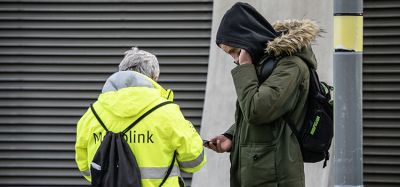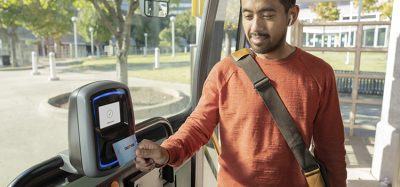CCTV is helping to police Britain’s rail system
- Like
- Digg
- Del
- Tumblr
- VKontakte
- Buffer
- Love This
- Odnoklassniki
- Meneame
- Blogger
- Amazon
- Yahoo Mail
- Gmail
- AOL
- Newsvine
- HackerNews
- Evernote
- MySpace
- Mail.ru
- Viadeo
- Line
- Comments
- Yummly
- SMS
- Viber
- Telegram
- Subscribe
- Skype
- Facebook Messenger
- Kakao
- LiveJournal
- Yammer
- Edgar
- Fintel
- Mix
- Instapaper
- Copy Link
Posted: 30 June 2010 | Paul Crowther, Deputy Chief Constable, British Transport Police (BTP) | 1 comment
Policing a transport network presents some real challenges, but also some great opportunities, and Closed Circuit Television (CCTV) coverage of the network falls squarely into the latter category.
From the policing point of view, CCTV in the UK is playing an increasing role in operations and is an important tool in controlling public space.
Britain’s rail system has a widespread network of CCTV cameras – there are more than 12,000 on the London Underground alone – and these are becoming more prevalent, with the roll out of on-train and forward facing CCTV. Cameras are producing a much enhanced product as well with advances in digital technology.
Policing a transport network presents some real challenges, but also some great opportunities, and Closed Circuit Television (CCTV) coverage of the network falls squarely into the latter category. From the policing point of view, CCTV in the UK is playing an increasing role in operations and is an important tool in controlling public space. Britain’s rail system has a widespread network of CCTV cameras – there are more than 12,000 on the London Underground alone – and these are becoming more prevalent, with the roll out of on-train and forward facing CCTV. Cameras are producing a much enhanced product as well with advances in digital technology.
Policing a transport network presents some real challenges, but also some great opportunities, and Closed Circuit Television (CCTV) coverage of the network falls squarely into the latter category.
From the policing point of view, CCTV in the UK is playing an increasing role in operations and is an important tool in controlling public space.
Britain’s rail system has a widespread network of CCTV cameras – there are more than 12,000 on the London Underground alone – and these are becoming more prevalent, with the roll out of on-train and forward facing CCTV. Cameras are producing a much enhanced product as well with advances in digital technology.
CCTV has a variety of uses and foremost amongst them for the police is the ability to identify and track suspects and their movements following a reported incident or intelligence report. Images taken from station CCTV systems are regularly circulated to local police and other agencies and frequently issued to the media as part of a witness appeal. Thousands of crimes have been solved in this way.
CCTV also has benefits as a surveillance tool, offering real-time monitoring of a location, although this aspect is sometimes overemphasised. Real-time surveillance makes sense if intelligence led, targeting known hotspots for instance. Monitoring cameras using dedicated staff is possible with some small systems, but it is not generally how British Transport Police operates as there are simply too many cameras to make this either feasible or cost effective.
British courts are used to having CCTV as part of the evidential package, and it can often play a very powerful role in bringing the guilty to justice, although rarely conclusive on its own. Even before a case reaches court, CCTV evidence presented to a suspect or their legal representative often persuades them to admit guilt, saving much police, court and witness time.
As well as providing good primary evidence and helping identify suspects, CCTV can also help an investigator direct Crime Scene Examiners to where they should be looking, and cut down on other expensive forensic techniques, such as DNA analysis.
As a deterrent factor, visible cameras and signs can help prevent crime, although that is not always easy to measure. We also know from passenger surveys that they provide reassurance to travellers, as part of a wider security regime – “a camera cannot jump off the wall to come to your assistance,” as a senior representative of the UK consumer watchdog Passenger Focus has said.
More active use of CCTV can involve monitoring officers in potentially hazardous situations, feeding back real-time information on crowd movements during major events and following identified suspects as part of a directed surveillance or other covert operation.
As can be seen, the CCTV-rich environment in which we operate on the railways offers many benefits to policing, which is just as well, for in many ways the railway environment makes policing more difficult.
The rail system allows the opportunist criminal to strike and be far away within seconds. In 2009, thefts from people, as opposed to car thefts, burglaries and the like, made up 26% of all reported crime.
Pickpocketing constituted 40% of all crime committed on the London Underground system and 14% of all crime committed nationally on the rail network. It can be a very difficult crime to detect for a number of reasons – it generally happens in crowds, at waist level, maybe covered by a coat or newspaper, within a couple of seconds, and often the victim is unaware that it has happened at all.
On the rail system, much criminal damage occurs in isolated areas and witnesses to these crimes are rare, whilst violence is mostly random and often public order related. This means that there is a much lower proportion of ‘domestic’ violence, assaults where the victim and perpetrator know each other, than is the case with violent crime dealt with by local police.
The prevalence of CCTV on the rail system is therefore a welcome counter-balance to the greater difficulties of crime detection.
However, we do not always make the most of the available technology and work is now in an advanced stage to try to maximise and enhance benefits from what is, after all, a multimillion pound investment by rail operators.
CCTV is not just a question of attaching a camera to a station wall or train interior. The back office processes – management and maintenance amongst them – can enhance or negate that investment, so they are important elements to get right.
A recent pilot scheme run in the south of England to improve the way BTP deals with CCTV footage resulted in an extra four hours per officer per week being freed up, and led to a 50% reduction in the time taken to obtain footage.
BTP does not own CCTV cameras, they are installed, maintained and paid for by rail operators, so we are working with the rail industry, as part of a National CCTV Strategy, to improve the way they are used and make the most of modern technology.
Whilst we can state with some confidence that CCTV is a powerful tool for crime detection and deterrence – a string of high profile crime detections attests to that – we do not as yet have the hard data to make that a scientific certainty. This is a lacuna we are working on with the National Policing Improvement Agency (NPIA) so, for the first time, we will be in a position to prove the effectiveness of CCTV by measuring accurately its contribution to crime investigation and detection.
In 1990s Britain, CCTV systems, especially on the rail network following terrorist attacks by the Provisional IRA, expanded, with little thought given to the process and people elements, on-going costs or maintenance. Systems have evolved organically with the result that there is now a diverse and fragmented approach to public space CCTV.
BTP has been part of a national scheme, sponsored jointly by the Home Office and the Association of Chief Police Officers (ACPO), that in October 2007 delivered a National CCTV Strategy document with 44 recommendations covering areas from standards and regulation to training, police use, retention and storage.
When the London bombs exploded in July 2005, CCTV played a crucial role in the police inquiry. The majority of data was on video tape, but some was digitally stored and the only way of retrieving it was to seize the hard drives, leaving parts of the network ‘blind’, whilst they were replaced. The increasing use of digital formats and reduction of analogue tapes means that the way that images are ‘exported’ or downloaded is as important as installing the cameras in the first place.
To address this in the future, BTP is seeking to develop with the industry and the DfT a longer term vision for the use of CCTV on the railway network and to set standards for the export of images.
The technology is moving very fast and BTP has an on-going CCTV project aimed at working with the rail industry to improve CCTV systems and processes, aligning BTP with the new National Strategy and delivering operational and organisational benefits through improved management and handling of CCTV data.
Standardisation is an important element in the project and BTP has also been leading a project with a software provider that has produced what is effectively an almost universal translator to let officers view data from multiple systems.
Also under development is a purpose built Pan-London CCTV Hub that can manage requests for CCTV, and access and download rail CCTV feeds around the capital.
Whilst new technologies – for instance so-called smart CCTV where software can recognise faces or patterns of behaviour – are still emerging, they are generally not yet usable in an operational environment. Whilst we wait for the technology, there is much to be done around resilience, quality and performance management.
Improvements in data handling can bring immediate benefits as our pilot scheme in the south of England mentioned above has shown.
Policing a rail system shares many similarities with policing fixed geographic locations, but in some very important ways it is an entirely different proposition. Having said that, the skill sets needed by BTP officers are largely the same, and they have the same training as their local colleagues, with additional training in specific rail related legislation and operating procedures.
Dealing with incidents on the rail network requires an understanding of how the system functions, not only in terms of being able to operate safely, but also in knowing where to go to find evidence, who to call in for expert advice and how to minimise disruption.
It is a complex task carried out 24/7 across England, Scotland and Wales and there are fewer than 3,000 police officers to achieve it. They need all the help they can get and in modern CCTV technology, they have found a powerful ally.
About the author
Paul Crowther
Appointed Deputy Chief Constable in September 2009 and Assistant Chief Constable (Crime) since June 2007, Paul joined BTP in 1980 and has experience in uniformed and CID posts. Paul has a crime and operations background and was an Incident Commander at several major train crash incidents including Hatfield and Potters Bar. In 2004, Paul was appointed as the Area Commander responsible for London Underground & DLR Area. In 2005, Paul was BTP’s Tactical Commander and led the operational response following the terrorist attacks on 7 July and 21 July. In his current role, Paul has responsibility for driving the Force’s performance, strategic development, professional standards, technology and media and marketing. Paul also leads for the Association of Chief Police Officers (ACPO) on conductive metal theft, is a member of the National CCTV Programme Board, supporting the ACPO lead on CCTV, and of the ACPO e-Crime portfolio, with responsibility for forensics.
Related topics
Security & Crime
Issue
Issue 3 2010
Related organisations
British Transport Police (BTP)








Nice and Informative Article